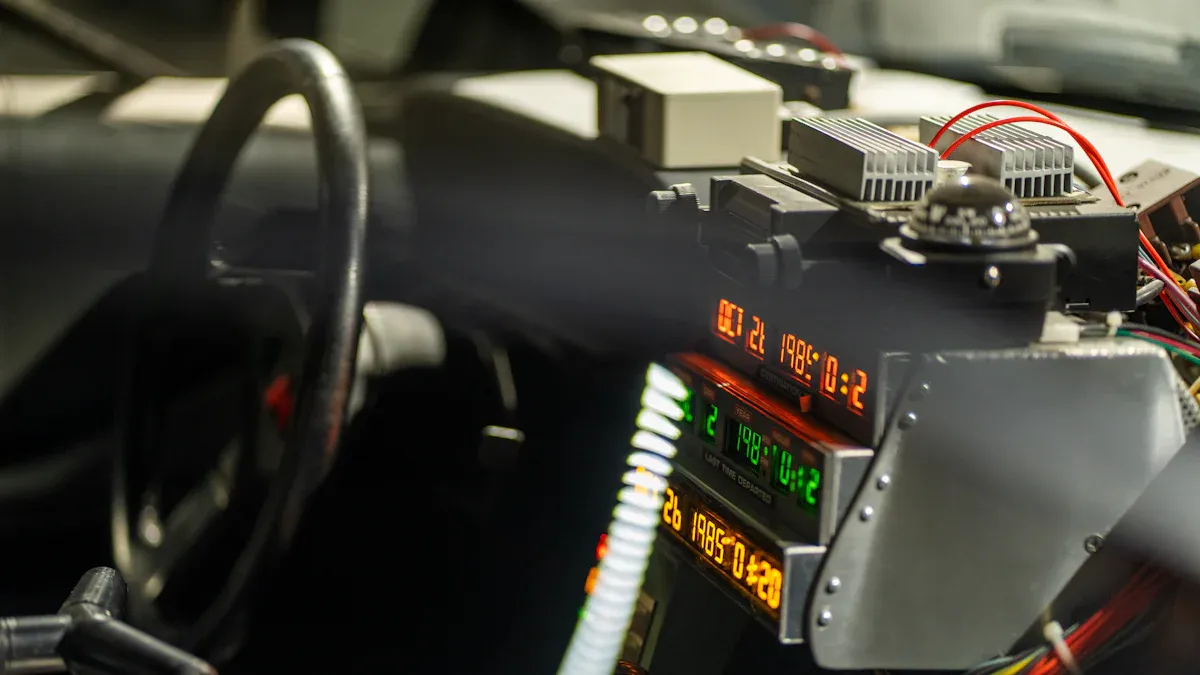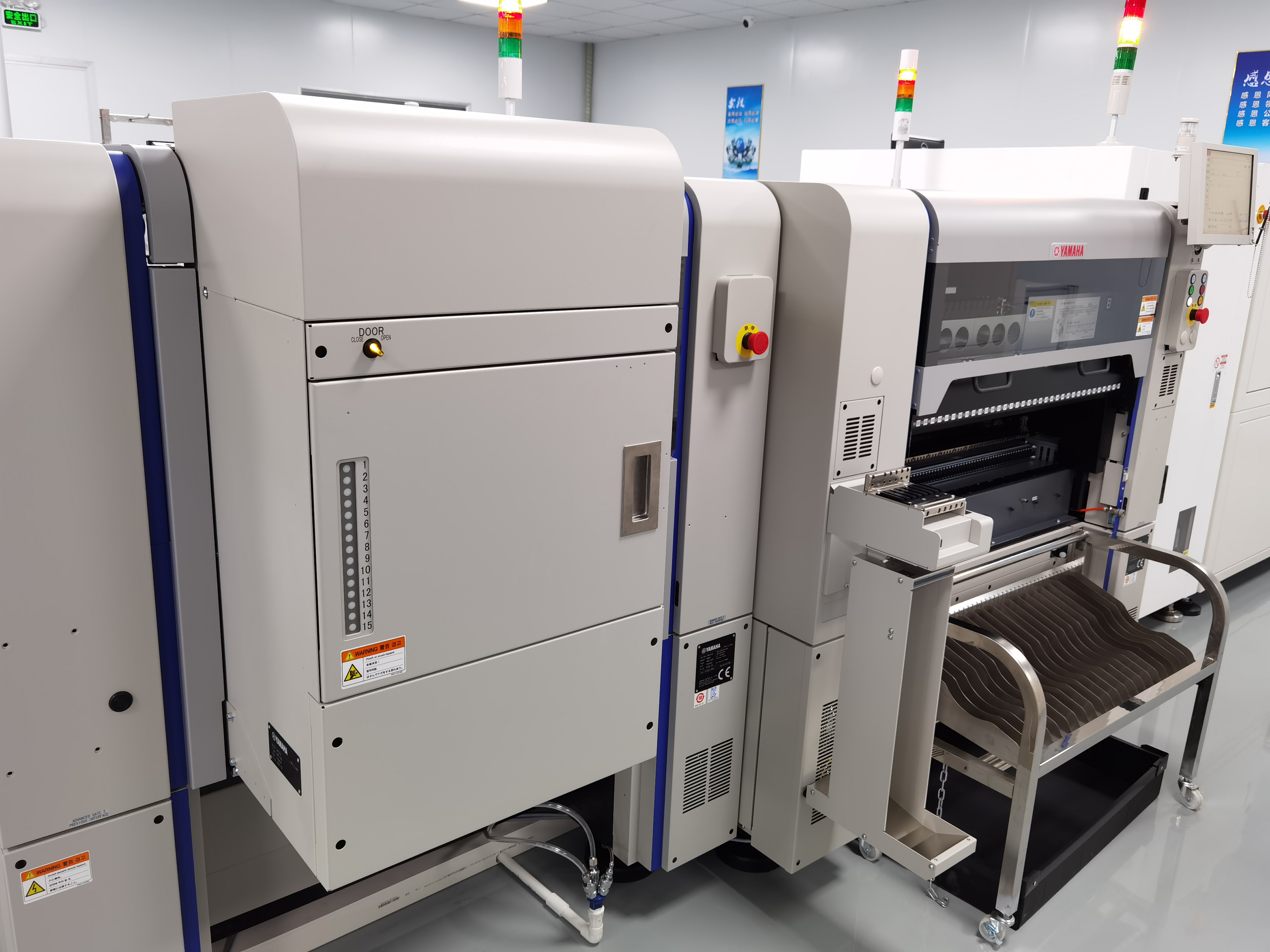Ensuring Reliability in Through Hole Assemblies for Automotive Electronics Applications

Reliability is very important in through hole assembly for car electronics. Through-hole assembly makes strong connections. This helps the parts work well in tough jobs. LTPCBA uses new pcb assembly technology and careful quality checks. Good quality, reliability, and correct through hole assembly keep pcbs working in important uses. This shows LTPCBA cares about doing a great job.
Key Takeaways
Through-hole assembly makes strong and tough connections. These connections help car electronics handle heat, shaking, and pressure. This helps them last a long time.
LTPCBA uses new technology and careful quality checks. They use smart inspection tools and process controls. This makes sure every assembly is very reliable.
Teams follow best steps like picking the right parts, careful soldering, and good testing. These steps help them make car electronics that work well in hard situations.
Reliability Factors in Automotive Electronics
Through Hole Assembly Standards
Automotive electronics must be very reliable. There are rules like AEC-Q100 and ISO 26262. These rules help keep car electronics safe and dependable. They make sure parts can handle heat, shaking, and interference. AEC-Q100 says companies should use special tools early in design. This helps stop problems before making the product. ISO 26262 gives steps for safety at every stage. Tools like Failure Mode and Effects Analysis (FMEA) and Fault Tree Analysis (FTA) help find and lower risks.
Through hole assembly standards are important for these rules. They help make sure pcb assembly is strong and reliable. Following Electromagnetic Compatibility (EMC) rules stops interference. This helps car electronics work well. Picking the right materials for automotive pcbs is important. They need to handle heat, water, and move heat away. Following rules like RoHS makes sure factories use safe ways to build. These rules show that through-hole assembly standards are needed for strong and reliable car electronics.
Mechanical Strength and Durability
Through hole assembly makes strong connections on pcbs. This is important for cars because they shake and get hot or cold. Interconnect Stress Tests (IST) check if through-hole pcb assembly can handle stress and heat. Thermal shock and cycle tests, like IPC-TM-650, show if assemblies last through temperature changes. The IPC-TR-579 test checks if plated-through holes stay strong under stress.
Studies show through-hole assemblies last longer with heat changes. The Coffin–Manson fatigue model helps guess how long they last. Research by Furlong, Freda, Park, and others proves plated-through holes are tough. Tests show copper wrap and base copper stay together. This means through-hole assembly is strong and reliable for car pcbs.
LTPCBA Quality Assurance
LTPCBA has high standards for through hole assembly. The company follows IPC-9202 for insulation testing. It also meets MIL-STD-1580C for defense and IPC-A-610 Class 3 for medical devices. LTPCBA gets a First Pass Yield of 99.5%. The customer return rate is less than 0.3%. First Article Inspection (FAI) follows AS9102 and ISO 9001 rules.
LTPCBA uses smart inspection tools like AOI, X-ray, CMM, and 3D scanners. These tools help make sure every through-hole assembly is correct. The company keeps process capability with Cpk ≥ 2.0 for important sizes. They use methods like Statistical Process Control (SPC), Predictive Maintenance, and Root Cause Analysis (RCA) to lower problems. LTPCBA’s focus on quality and reliability makes it a trusted company for car electronics.
Note: LTPCBA works hard to make sure through-hole assembly is reliable for car pcbs. Their new technology and strong quality checks are a good example for others.
Best Practices for Through-Hole Assembly

Component Selection and Placement
Good through hole assembly starts with picking the right parts. Engineers pick parts that fit the pcb’s job. They think about heat, noise, and how strong the parts need to be. Designers follow steps when placing parts. First, they put in mechanical inserts and connectors. Next, they add power parts and sensitive circuits. Last, they place the rest of the parts. This order helps stop mistakes and keeps the assembly good.
Keeping similar parts facing the same way helps a lot. It makes building and fixing easier. Putting all the parts on one side saves time. It also makes the product better. Tooling holes and fiducial marks help machines place parts right. Designers do not put parts near the edge or holes. This stops damage when people handle the board. These rules help make strong and good through-hole assemblies for tough jobs.
Through-hole assembly is best for high-power uses. It is also good for important jobs that must not fail. It gives strong connections that last a long time. Connectors can handle up to 100 N of force. They have very low failure rates, even after ten years. Machines put parts in the right spot with 0.1 mm accuracy. This makes the assembly even better.
Soldering and Process Control
Soldering is a key part of through hole assembly. Using machines and controls gives steady and good results. Engineers watch the temperature to keep it just right. They check how much solder is used for strong joints. Robots are checked often to make sure they move right.
Process control means checking and testing as you go. This lets people fix problems fast. Design for robots means parts are easy to reach and place. Engineers pick robots that are fast and careful. Software helps by giving feedback to make things better.
Process Controls / Quality Metrics | Description | Key Details / Acceptance Criteria |
|---|---|---|
Temperature Monitoring | Watches soldering heat for good joints | Needed for machine soldering |
Solder Quantity Control | Checks how much solder is used | Makes sure joints are strong |
Robot Calibration | Keeps robot moves correct | Helps soldering stay steady |
System Integration | Links to test and check systems | Lets people fix things fast |
Visual Inspection Criteria | Sets how much solder should cover | At least 95% in key spots |
Rules like IPC J-STD-002 and IPC J-STD-003 say how to test solder. People look for at least 95% solder coverage. Steam aging helps make sure joints last a long time. The finish and how parts are stored also matter for quality.
Inspection and Testing for Quality
Checking and testing make sure through-hole assembly is good. Some tests do not hurt the board, like looking with cameras or X-rays. These tests follow IPC-TM-650 rules. Other tests cut the board to check inside. These show how thick the plating is and if joints are good.
Mechanical tests pull or heat the board to see if it holds up. AOI finds problems like not enough solder or cracks. Electrical tests check if the board works right. These include continuity, hi-pot, and in-circuit tests. ROSE tests check for leftover stuff that could cause problems.
Machines like CMMs and 3D scanners check the size and shape. Rules like IPC-A-600, IPC-A-610, and IPC-6012 say what is okay. Reports show things like microsection checks, heat tests, and humidity. These reports help track quality and find problems.
Tip: Checking and testing at every step helps keep quality high. It also lowers the chance of mistakes in car electronics.
LTPCBA Advanced Technologies
LTPCBA leads in making great through-hole assemblies for cars. The company uses smart machines to place and solder parts. Robotic peg-in-hole methods help put parts in the right spot. These methods make the process faster and more exact. Special controls keep the machines working well with little force.
LTPCBA uses AOI, X-ray, and 3D scans to check for problems. These tools find mistakes early and keep quality high. The company gives fast quotes in 2-3 days and has 24-hour help. This helps make and deliver products quickly.
LTPCBA trains workers and keeps lines organized. This makes the work faster and more reliable. The company has a 99.5% pass rate and meets world standards. LTPCBA’s new tech and strict checks make sure their through-hole assemblies work well for cars and other hard jobs.
Cars need strong pcb assembly and reliable through hole assembly. Companies pick tough parts to make things last longer. They use new inspection tools to check for problems. They also follow strict rules to keep quality high. Studies show through-hole assembly helps stop mistakes and keeps things working well for a long time. LTPCBA knows how to make sure pcbs are good quality. Teams should use a checklist to keep checking quality.
Through hole assembly helps parts stay strong in tough places.
New pcb assembly machines help make fewer mistakes.
Testing and checking often make through-hole assembly more reliable.
Companies like LTPCBA always give good results for car electronics.
Using checklists helps teams keep quality high in every step.
FAQ
What makes through hole assembly reliable for automotive electronics?
Through hole assembly makes strong bonds between parts. This helps the parts stay in place when cars shake or get hot. Car electronics need this strength to last a long time in tough places.
How does LTPCBA ensure quality in through hole assembly?
LTPCBA uses special tools to check every step. The team looks at each part of the process. Machines and strict rules help keep the work very reliable for car electronics.
Why do engineers choose through hole assembly over surface mount for some parts?
Engineers pick through hole assembly for big parts and connectors. This way, the parts are held tighter. It helps when parts get a lot of stress or must stay in place.
See Also
Evaluating Reliability Between Through-Hole And SMT PCB Assemblies
Guidelines To Fulfill SMT Assembly Standards In Automotive Manufacturing
Expert Tips For Managing DIP Assembly And Through-Hole Tolerances
Innovative BGA Assembly Methods For Reliable Electronics Production
Proven SMT Assembly Strategies To Ensure Quality Electronics Manufacturing
